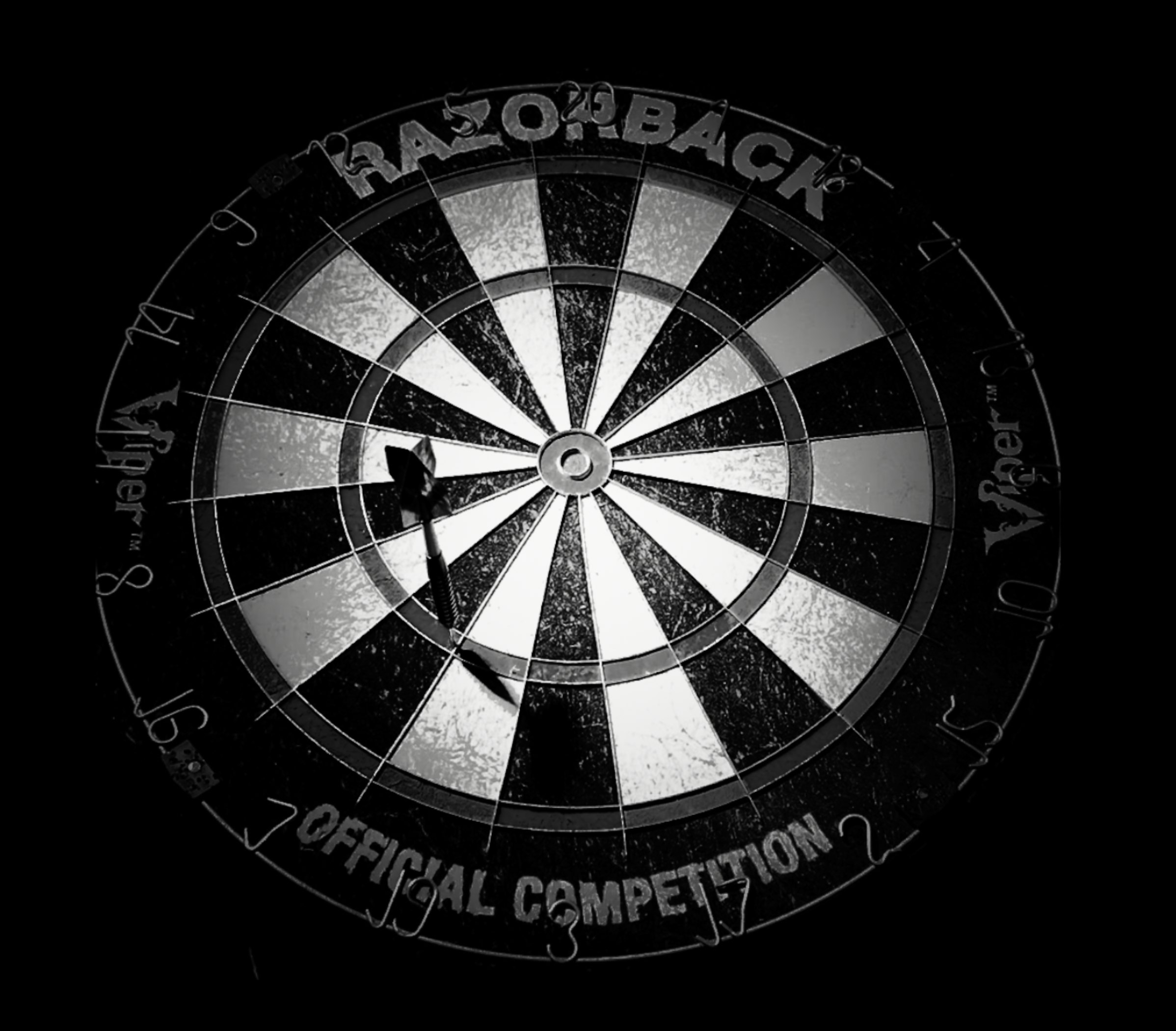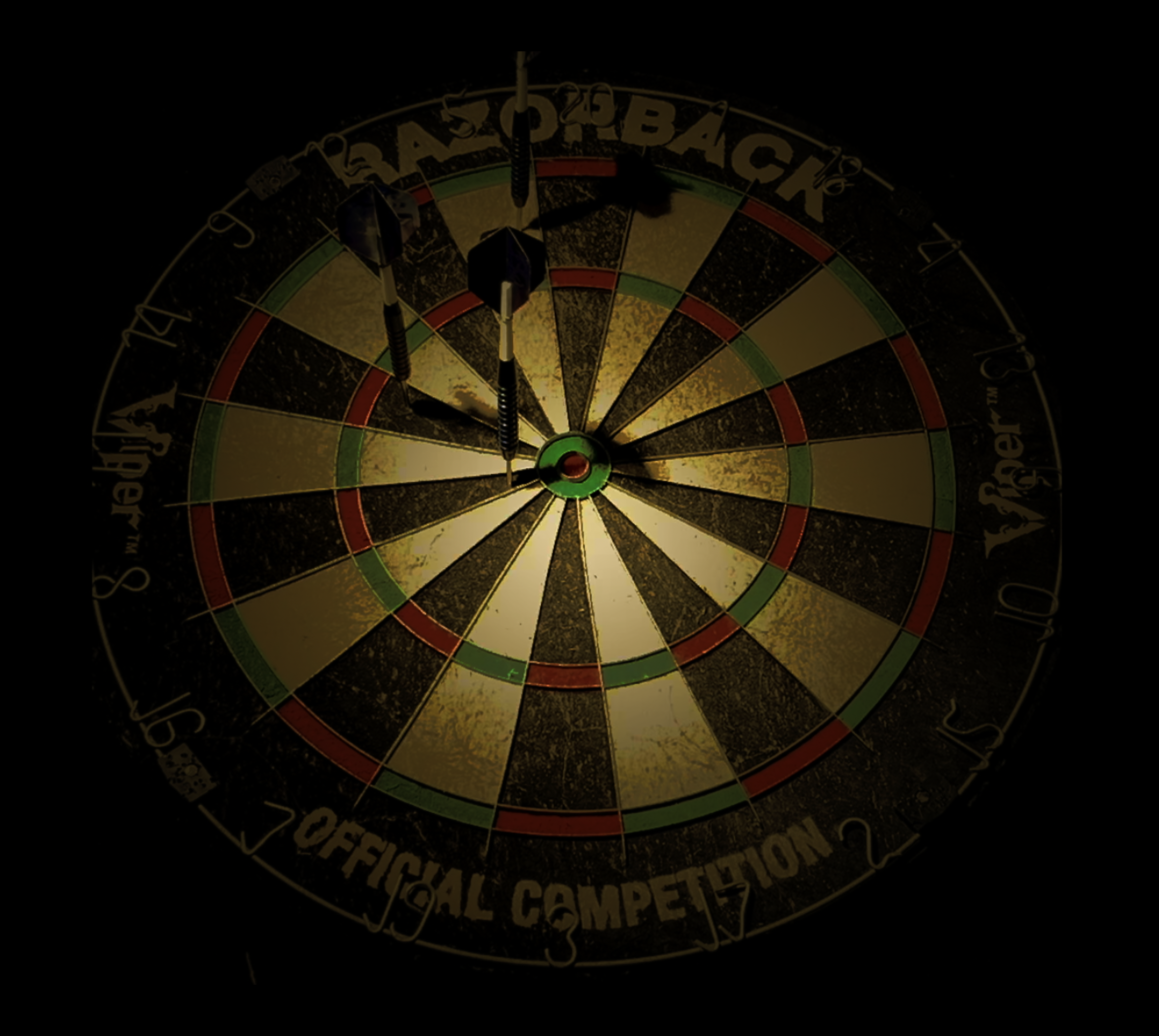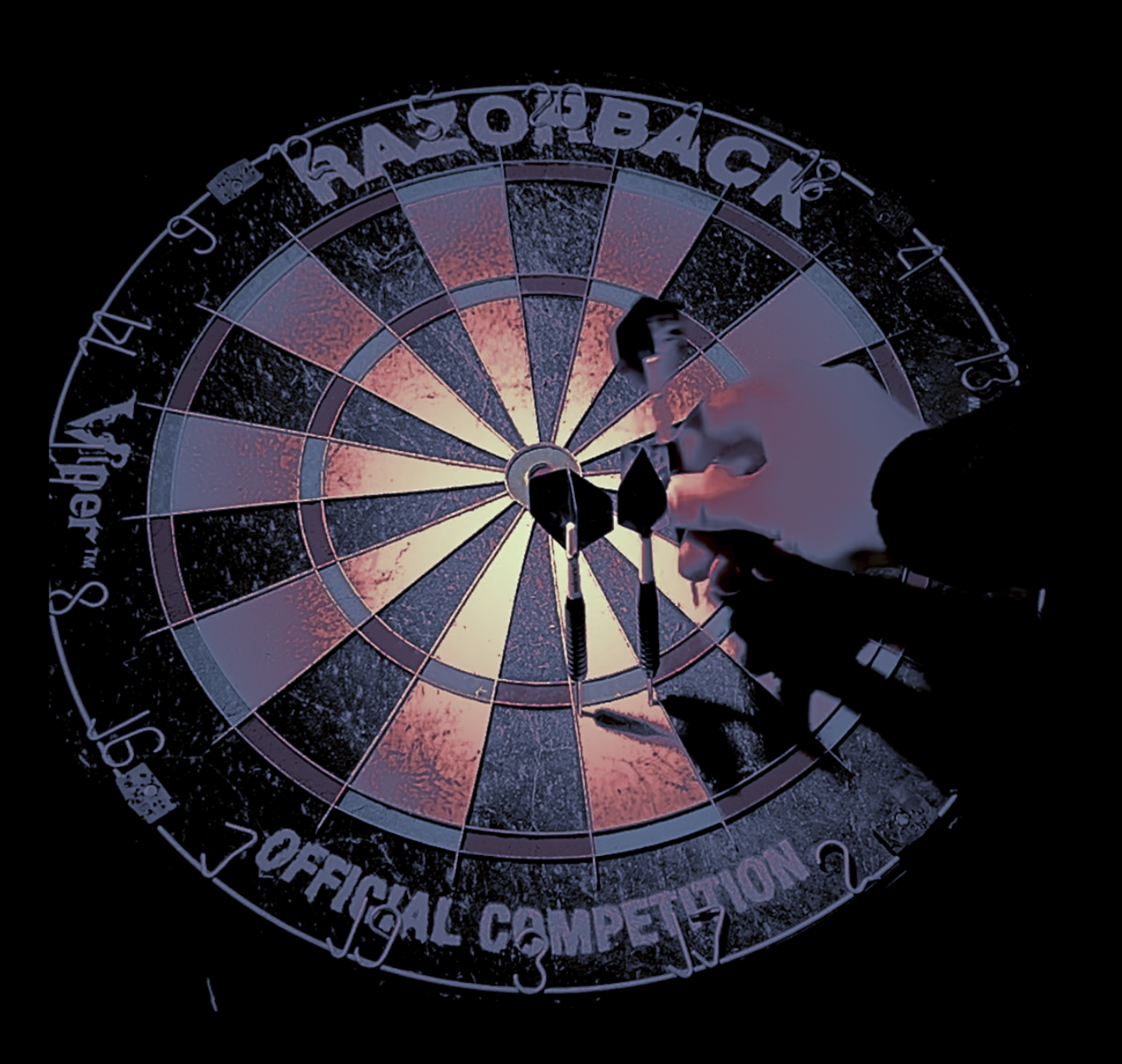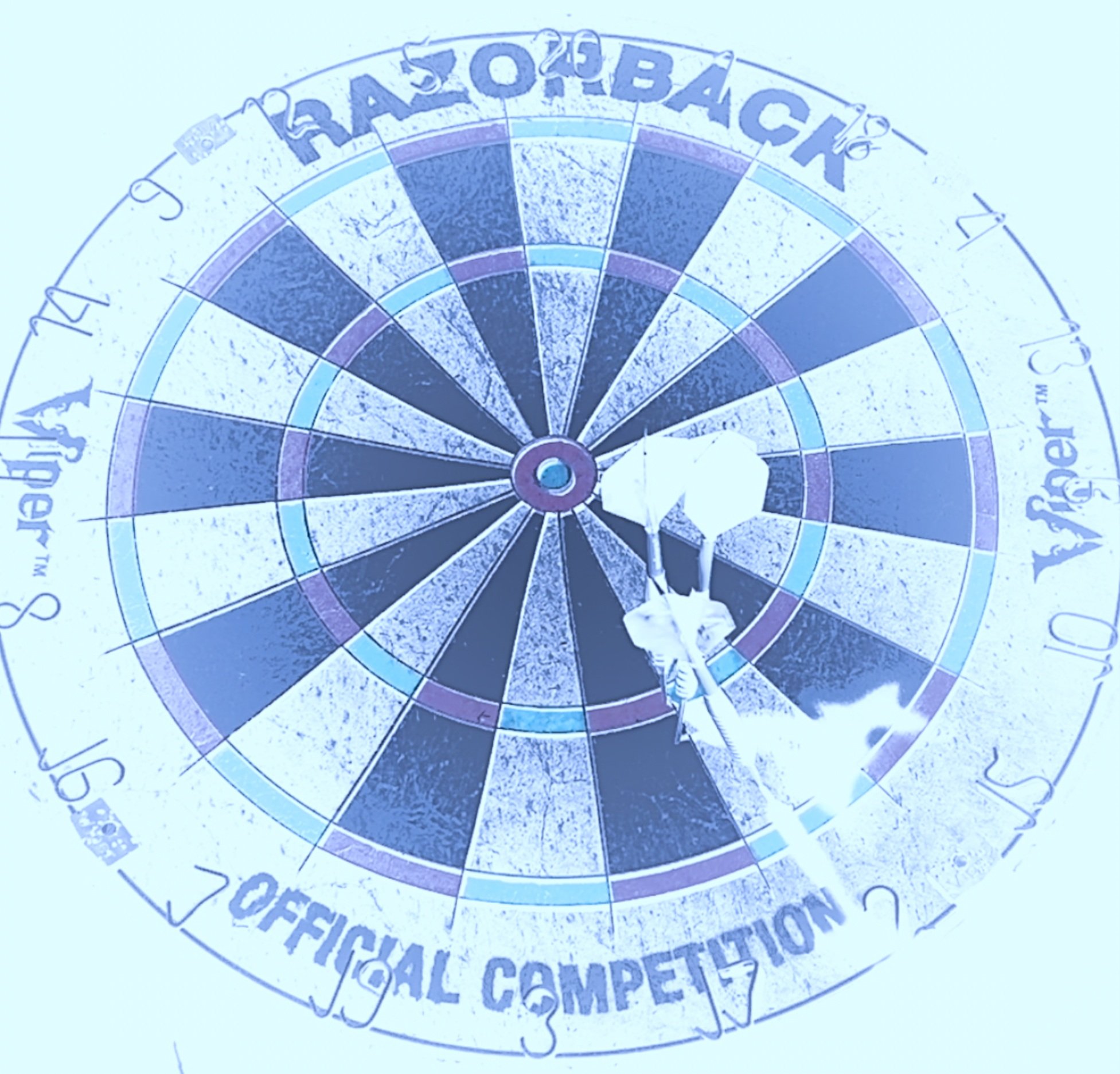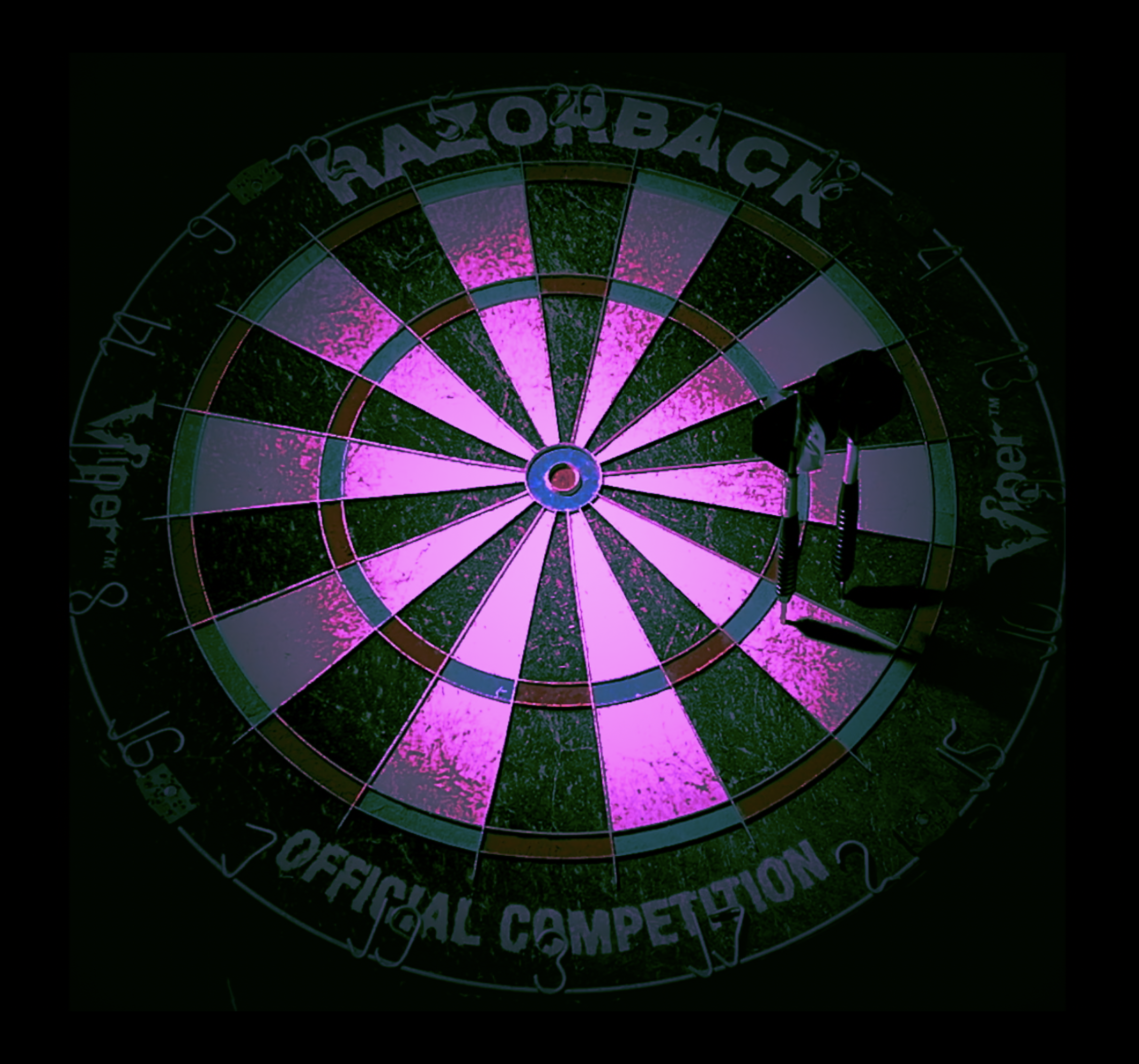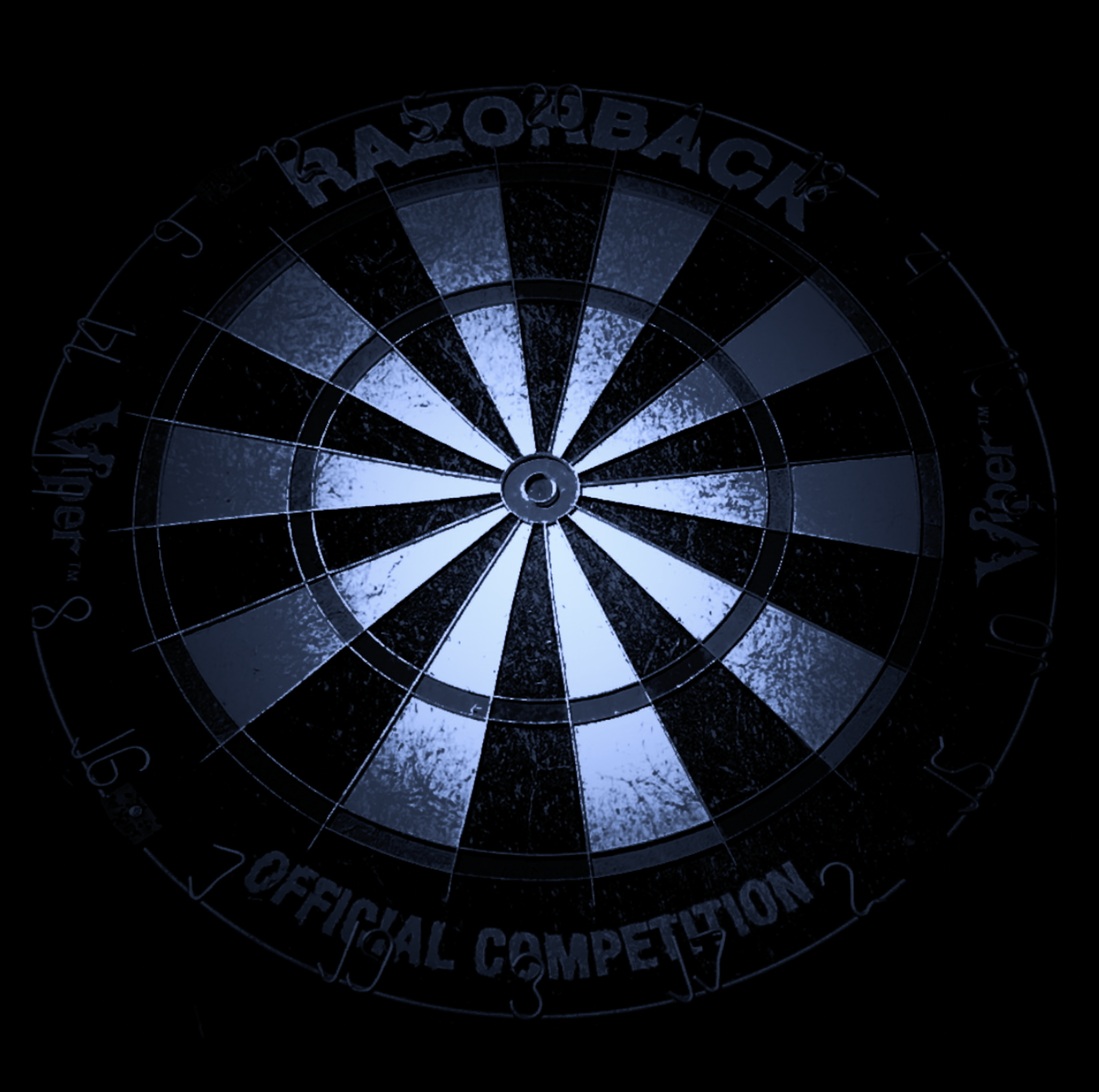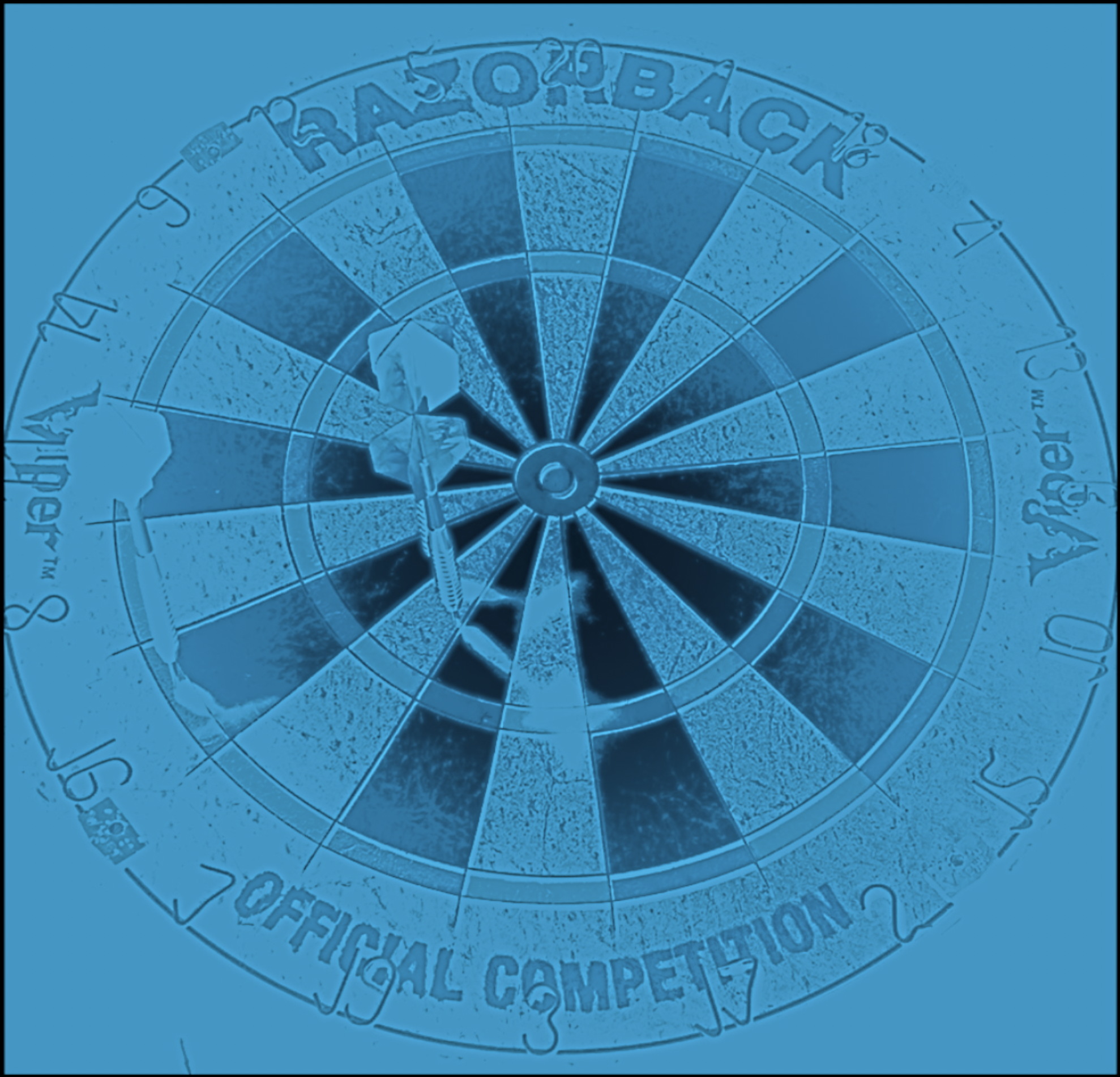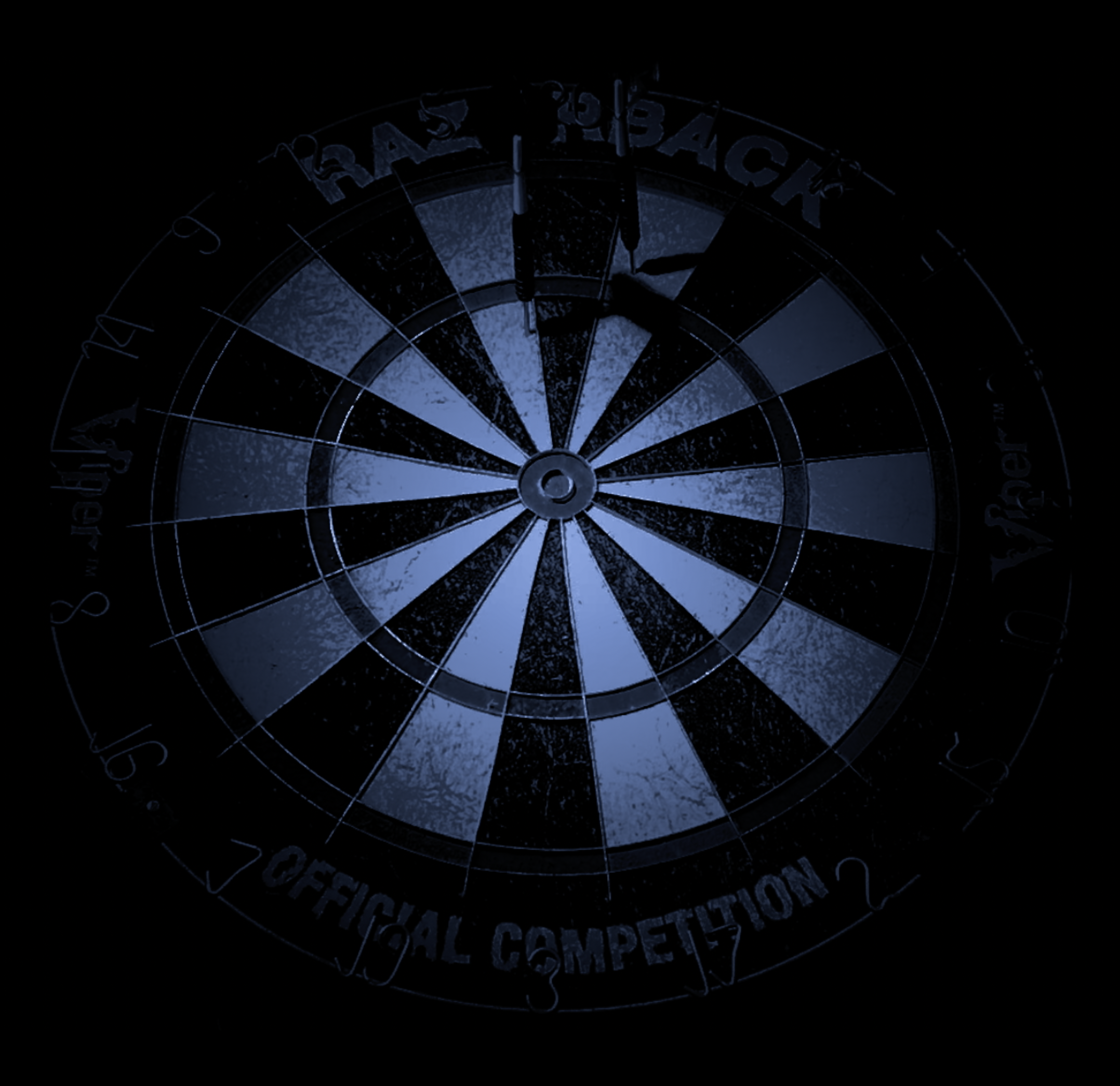My Composing Process: darts (2023)
Dear Readers,
I started work on “darts” (originally titled “NewFastJazz in my computer”) over a month ago, but wasn’t initially able to creatively crack it. So it just languished in my computer and I kept returning back to it to no avail. Then, something clicked. Once I figured out the visuals for the video (the dartboard in my basement), the piano solo that I had been trying to figure out for weeks suddenly appeared in one improvised performance. Sometimes that is just how music works.
Let’s dive into this, shall we?
Drum & Bass + Dozens of Takes
This piece started with a drum beat and then a bass groove. For the drums I used a combo of the 1975 kit from Spitfire Audio and the Brooklyn Kit from Logic. The bass is from Native Instruments and I ran it through a compressor and tape delay.
The bass groove was completely improvised, I think around the first or second try. It is largely based in the key of Cm but frequently skips up to F# major in crazy ways.
So this was the initial starting point. I loved the vibe of this beat and started to improvise with the piano over it. My goal was to create a long form jazz piano solo (channeling Thelonious Munk and McCoy Tyner). I have done elements of this already in my “little pieces of improvised sound” series. That was with a lot of different instruments at times playing over each other in a chaotic way (which was the goal). In other words, I wanted to strip the music back to the basics. A trio: drum, bass, piano (but all played me haha).
So I did a lot of takes of the piano, playing for 5 minutes at a time. Improvising. Messing up. Not creating a coherent sound. Stopping halfway through.
This is the combined MIDI note information from 27 different recorded takes in my Logic file. Looks a bit chaotic, I know.
And it became discouraging. It felt like this piece would never come together. I even tried splicing out parts from takes that I liked and combining them as a full performance, but that felt disingenuous and weird.
So I let the drum and bass vibe sit in my computer. Until a couple of days ago when the solo finally appeared.
Finally Getting the Performance
I started listening to the pianist McCoy Tyner last week (check out his album “Night of Ballads and Blues”). I was drawn to his laid back playing, clear melodic lines and his way of crafting solo phrases. His solos have a great mixture of quick sections, one finger melodies and longer chords. Most importantly, his performances have a musical arc, something that was missing from my piece.
My family has a number of jazz CD’s. One of them is the Nat King Cole album “After Midnights” (I got it for a dollar at a library book sale). It is a fantastic album, highly recommend. I played the CD and sat down at the piano and started to improvise to the music. I was quickly able to determine which key a given song was in and then just noodled around, focusing on just using my right hand and playing one note at a time.
And I felt myself improving. I felt more in a flow and I was focusing on crafting clear musical phrases. Thanks Nat.
So when I sat down with my “FastNewJazz” file again (its 27 muted piano takes), I felt more confident that I would finally be able to play a full solo that I was happy with. And I did, focusing mostly on playing one note at a time with my right hand. I took my time. I let there be silence. I created motifs that I brought back at the end of the solo.
In the middle of playing, I realized that I wasn’t sure when the 5 minute looped drum and bass would end. But I didn’t want to get out of the flow so I kept playing and miraculously stopped right as the loop ended. Right then and there I knew: I had the solo.
Shaping “darts”
In many ways, the work on the piece had just begun. Now that I had the solo, I had to shape the drums and bass around it so it felt like a spontaneous, organic performance. So I cut all of the other piano solo tracks and only had four tracks left: the bass, the two drums tracks and the final piano solo. A cleaner, more organized, Logic session always helps things.
The finalized piano solo shaped the different sections of the piece. The musical arc that I had been searching for. I have since come up with.names for each section:
Drum Opening: 0:00-0:07
Tentative Piano Entrance: 0:07 - 0:21
Gaining Confidence: 0:21 - 0:50
First Iteration of Main Theme: 0:50 - 1:04
Lost In Thought: 1:04-1:17
A Little Confused: 1:17-1:43
Cruising Confidently: 1:43 - 2:10
Second Iteration of Main Theme (More Chaotic): 2:10 -2:24
Really Moving Fast: 2:24 - 2:38
Brief Break: 2:38 - 2:45
Major Chaotic Crisis: 2:45 - 3:07
Easing Back Into Normalcy: 3:07-3:34
Each of these moods warrented changes to the drums and bass. For example, when the first iteration of the main theme begins at 0:50, that is when the full drum beat first plays. Prior to that, I was using elements from the full beat but in a more simplified way. At 1:04 when the “Lost In Thought” section begins, I took away the large drum beat and instead opted for the use of cymbals and single bass notes (as opposed to the quick eigth notes). This allowed for more sonic space for the piano. This is also the only section where I changed the bass line, at every other point it is just repeating the original 12 bar phrase.
To add to the organic performance feel, I added in cymbals to respond to the second iteration of the main theme (between 2:10 and 2:24). There is a call and response aspect to it that feels improvised and not perfect. It adds to the chaos of the moment. And during the “Major Chaotic Crisis” section (which feels like the piano is having an existential crisis), I had the hi-hat follow the exact notes of the piano which are entirely off beat. This has a spontaneous, in-the-moment feel that adds to the live sense of the piece.
It’s interesting because I initially performed this solo to a long looped track of the bass and drums, so the idea of each of these distinct sections wasn’t on my mind during the moment of performance. It was only when I analyzed the solo after it was performed that these energetic sections, breakdowns, quieter moments and builds really came into focus.
Below you can see the full Logic session in its fully glory. You can also see how I editing the drum tracks to work with each section of the solo.
Experimental Production + Final Editing
The Pitch Shifter in Logic
I had a lot of fun further shaping this piece through production. I decided to experiment with pitch shifting. In Logic you are able to automate things. This means that I can adjust the mix level of the pitch shifter in the song and it stays that way. That is why at the beginning of “darts”, the cymbals of the Brooklyn Kit sound low and distorted and the piano as a bizarre detuned octave playing below it. This gradually stops though and when we reach the “Gaining Confidence” section the pitch shifting is completely gone. During the “A Little Confused” section the pitch shifting returns, giving the piece an off-kilter and surreal sense. And finally, at the end the pitch shift happens really fast and leads to a bizarre hi-hat hit that sounds like thunder rumbling.
Finally, I do want to come clean and say that I did edit the piano solo slightly while finalizing the piece. By this I just mean that I moved a couple notes around so that they were clearer and didn’t play over each other. I also cleaned up a couple lines so that they didn’t sound too messy. That was it though.. I didn’t redo sections and I didn’t move whole sections around. It is a full, improvised performance.
Filming A Dart Board
I really like darts. My family has had a board in our basement for over five years. It is a great activity to help clear your head, take a breather and focus. While finishing my master’s thesis for the University of Edinburgh in 2020, I would frequently go down to the basement and play a game of 301 or 501 to take a break from work.
Early this week while playing darts, I realized that the dart board would be a cool thing to film. So I set up a tripod with my iPhone underneath the board and filmed a couple 5 minute takes of me throwing darts. I was going to try to play a. game of 301 on camera but instead just focused on grouping darts in specific areas of the board. This is one of the warm ups that I do, to help with accuracy.
I cropped the video so it only included the circular board and then worked on the film in iMovie. Like my pieces “dreaming of fish” and “the waves shape the pebbles like clay”, I wanted to change the color of the film to signify changes in the music. All of these changes basically lined up with the 12 sections that I have detailed in this blog entrance. For each color change, I improvised in iMovie to change the filter and effects to create bizarre and at times distorted color imagery. The goal was to further give the piano solo a sense of scope and a visual and sonic story arc.
For the cover of “darts”, I took most of the screenshots of the diffferent colored dart boards and put them on a black background. I think it sort of looks like a carnival ride. Was very pleased with how it turned out:
Jazzy Conclusions
I love jazz music. On my first iPod I had Miles Davis’s “Birth of the Cool” and I listened to it constantly, entranced by the kinetic sound and the blistering melodies. Over the past few years I have worked jazz influences into my own music. “darts” is yet another example of this.
Every piece that I compose is a learning experience. I start from square one, a blank slate, and the piece quickly (or gradually) reveals itself. I experiment with different production techniques and get out of my musical comfort zone. This piece was no different. I had never tried a long form jazz piano solo like this before. And the piece being based around a dart board was a split second decision that made all the different. The film influenced the music as much as the music influenced the film.
As always, thanks for reading!
Your’s Musically,
Nicholas Escobar








